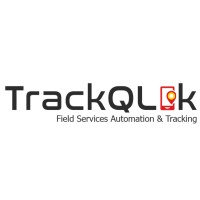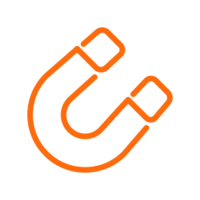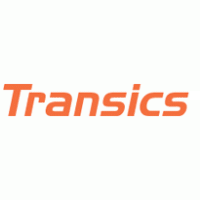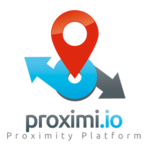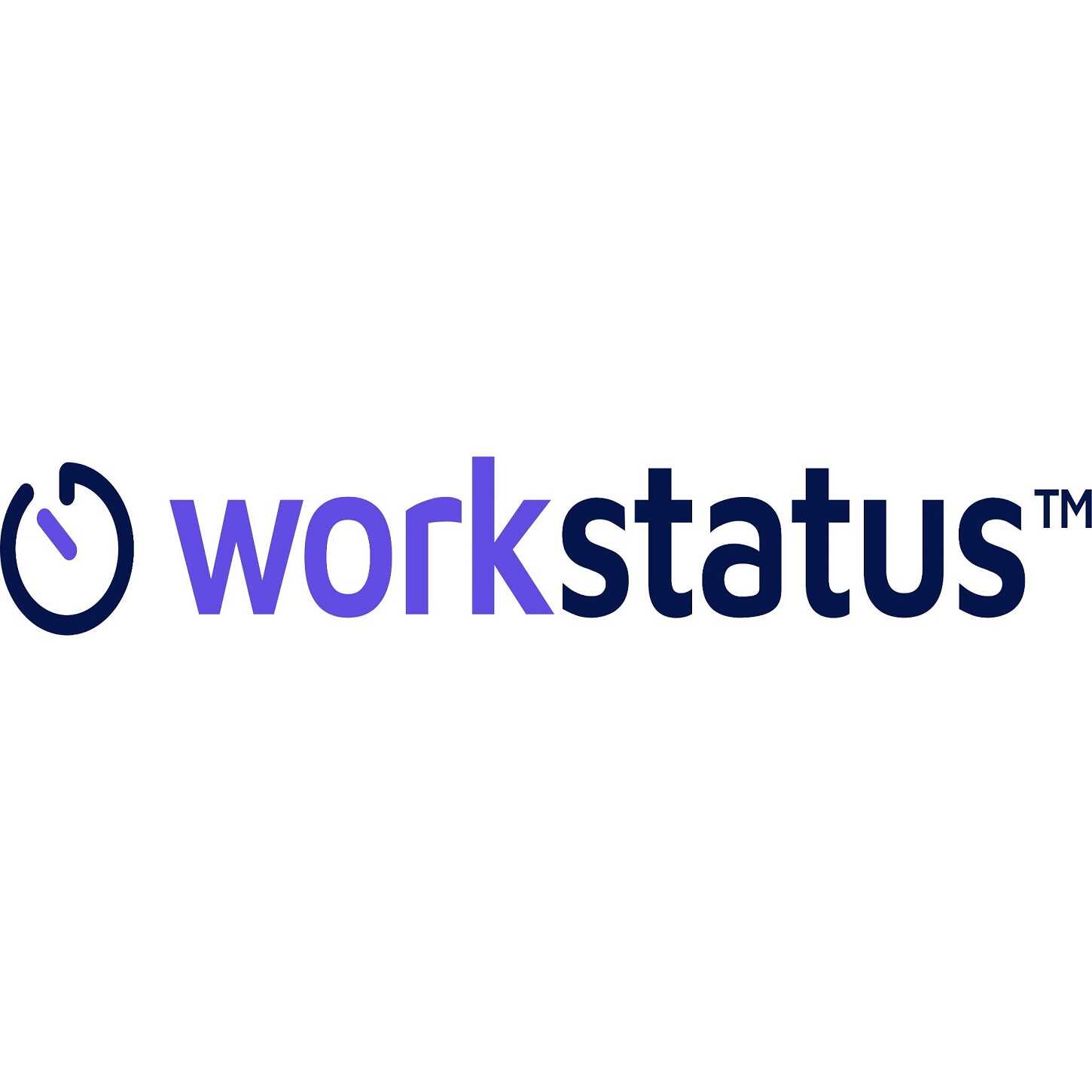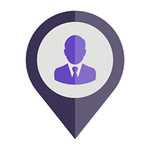What Is Geofencing Software?
Businesses can establish virtual borders or "fences" around a particular geographic area with the help of geofencing software, a potent tool. It allows companies to target clients in a certain region and interact with them in a very efficient and customized way. When a consumer enters or leaves the designated area, the software uses GPS, RFID, Wi-Fi, or cellular data to initiate actions or notifications.
Marketing is one of the main applications for geofencing software. When potential customers are in the area of the company, businesses can utilize it to give them personalized messages, offers, or promotions. By contacting clients at the ideal moment and location, this helps to boost foot traffic and conversions. In addition to marketing, geofencing software finds use in a number of other sectors, including logistics, retail, and transportation.
It can be used to optimize delivery routes, track assets and vehicles, and keep an eye on personnel locations. This aids companies in increasing productivity, cutting expenses, and streamlining operations. Businesses can also collect useful data and insights on customer behavior with geofencing software. Businesses can find trends, comprehend consumer preferences, and improve their marketing tactics by using data to inform their decisions by following the movements of clients inside a certain area.
Accuracy, interoperability with current systems, usability, and customer support are all important considerations when selecting geofencing software. BLIP Systems, X-Mode, and GeoFli are a few of the well-known geofencing software choices available on the market. Finding the ideal option for your company's needs can be facilitated by carrying out in-depth research and contrasting features and costs.
What Are The Recent Trends In Geofencing Software?
The necessity for geofencing software has grown significantly in recent years due to the popularity of location-based marketing and the need for companies to interact with their clientele more precisely and individually. As a result, the geofencing software industry has seen a constant flow of advancements, giving companies access to increasingly sophisticated and potent instruments to support their operational and marketing initiatives. Let's examine some of the major developments in geofencing software that consumers need to be aware of in more detail:
1. Technology Integration: Customer relationship management (CRM) systems, marketing automation platforms, and location analytics tools are just a few examples of the marketing and operational technologies that geofencing software is progressively integrating with. This enables companies to use geofencing data more comprehensively, integrating it into their overall strategy for engaging customers and learning more about their behavior.
2. Artificial Intelligence And Machine Learning: In order to evaluate and interpret the ever growing amount of data, geofencing software is now integrating algorithms for artificial intelligence and machine learning. This makes it possible for companies to spot patterns and trends in consumer behavior and develop geofencing campaigns that are more focused and successful. For instance, using geographical data, the program can automatically divide up the client base and tailor offers and messages to each individual.
3. Real-Time Capabilities: Geofencing software is developing to enable real-time capabilities as companies work to give their clients more pertinent and timely offers and notifications. This enables companies to instantly send geofenced notifications and messages based on a customer's present location. Businesses in the retail and hospitality sectors, where clients are frequently on the go and seeking out bargains or information right away, can benefit greatly from real-time geofencing.
4. Multi-Device Targeting: Geofencing software may now target clients across many devices due to the growing popularity of smartphones and other linked gadgets. A more seamless and integrated experience may be had by allowing a geofenced message to be activated on a customer's laptop, smartphone, or even smartwatch. This is especially helpful for companies that want to interact with their clients at different periods of time.
5. Customization And Personalization: Geofencing software enables companies to provide the individualized experiences that today's customers demand. Businesses can develop highly tailored and personalized geofenced communications and offers by tracking and analyzing client behavior. This raises the likelihood of conversion and loyalty while also improving the customer experience.
Benefits Of Using Geofencing Software
Businesses can use geofencing software to target and interact with customers in particular geographic areas. This technology creates virtual boundaries, or geofences, around designated areas using a mix of GPS, RFID, Wi-Fi, or cellular data. A pre-programmed action, such displaying an advertisement or sending a push message, is triggered when a device enters or exits a geofenced area. With good reason, this cutting-edge software has grown in popularity in the marketing industry. Here are some main advantages of utilizing geofencing software:
1. Improved Customisation And Targeting: Businesses can use geofencing to precisely target their messaging to clients in a specific place. Higher engagement and conversion rates result from more tailored and pertinent interactions made possible by this hyper-localized strategy. By establishing several geofences, companies may also design unique campaigns for certain regions, groups of people, or occasions.
2. More Foot Traffic And Sales: One effective strategy for increasing foot traffic to physical establishments is geofencing software. Businesses can encourage potential customers in the area to visit their store and make a purchase by providing them with pertinent and timely notifications. Sales have been shown to be significantly impacted by this technology; on average, reports have shown a 20% increase in in-store visits and a 75% increase in buy intent.
3. Improved Data And Insights: Geofencing software gives companies useful information about the preferences and actions of their clients. Businesses can learn more about the behaviors and interests of their target audience by monitoring when and where customers enter and exit a geofenced area. This data can then be utilized to enhance overall business operations and further hone marketing strategy.
4. Cost-Effective Marketing: For companies of all sizes, geofencing software provides a more affordable option than conventional marketing techniques. Businesses can save time, money, and resources by avoiding wasting their marketing efforts on irrelevant consumers by using the ability to target particular locations and demographics.
5. Real-Time Communication: The ability of geofencing software to notify clients in real-time is one of its biggest benefits. This increases the likelihood that businesses will turn potential clients into paying customers by enabling them to interact with them instantaneously at the appropriate time and location. Additionally, it makes it possible for businesses and customers to communicate more smoothly and continuously, which improves the customer experience in general.
Important Factors To Consider While Purchasing Geofencing Software?
In order to make an informed choice and select the best option for their needs, purchasers should examine a number of crucial criteria when contemplating the purchase of geofencing software.
These elements consist of:
1. Compatibility And Integration: The first thing to think about is if the geofencing software works with the systems you already have and if it's simple to include into your present workflow. This is essential to guarantee a seamless installation process and prevent future technical problems.
2. Features And Functions: It's critical to thoroughly assess the geofencing software's features and functions. Location monitoring, real-time warnings and notifications, and the option to create custom geofences are a few typical features to search for. Verify that the software has every functionality you need to satisfy your unique business requirements.
3. User-Friendliness: Any software, including geofencing, must have an intuitive user interface. Your team's ability to use the new system's capabilities and adjust to it may be greatly impacted by this. Choose software that is simple to use, intuitive, and has clear instructions and quick customer service when needed.
4. Accuracy And Precision: The efficacy of the geofencing software can be significantly impacted by its accuracy and precision. To guarantee precise location monitoring and dependable functioning, look for software that makes use of cutting-edge algorithms and technologies.
5. Customization Options: When it comes to geofencing, every company has different requirements and goals. Selecting software that allows for customization is therefore essential if you want to modify the features to meet your unique needs. By doing this, you can be sure that the software will actually improve your company's operations.
6. Security And Privacy: Since geofencing entails tracking people's locations, data security and privacy must be given top priority. Verify that the program complies with all applicable rules and regulations and has sufficient security measures in place to protect sensitive data.
7. Cost And Scalability: Finally, take into account the geofencing software's cost and scalability. Choose software that allows you to scale up or down in accordance with the expansion of your company and offers various pricing plans. This will guarantee the software's long-term cost-effectiveness.
What Are The Key Features To Look For In Geofencing Software?
With the use of geofencing software, organizations may create virtual "geofences" or perimeters around a particular region and set up automated responses when someone enters or leaves the area. Due to its many advantages for operations and marketing, this technology has grown in popularity in recent years. To make sure you're selecting the finest choice for your company, there are a few essential characteristics you should examine if you're thinking about investing in geofencing software.
Among these characteristics are:
1. User-Friendly Interface: When choosing a geofencing program, the user interface should be the first factor taken into account. Even for people with little technical expertise, it should be simple to use and intuitive. Along with easy-to-follow instructions and templates, the program should provide a seamless and effective setup process.
2. Various Fencing Options: Geofencing software ought to provide the ability to design various fence shapes, including radial, polygonal, and circular fences. This enables companies to tailor their fences to their unique requirements and target locations.
3. Real-Time Monitoring: To track your target audience's movements within the geofenced area, the software should provide real-time location monitoring. Businesses can use this functionality to set off pertinent and timely actions for a more individualized marketing strategy.
4. Tailored Push Notifications: Companies should be able to send out push notifications to users who enter or leave the specified zones using geofencing software. To capture the user's interest and boost engagement, these alerts can be tailored with a unique message, exclusive deals, or other pertinent details.
5. Reports And Analytics: Select geofencing software that provides thorough reports and insights. Businesses can use this data to better understand the behavior of their target audience and improve the effectiveness of their geofencing initiatives.
6. Simple Integration: The software's ability to work with your current tools and systems is another important quality to consider. To improve efficiency and streamline procedures, pick a geofencing program that provides simple connectivity with your marketing automation or CRM.
7. Geo-Analytical Features: Certain sophisticated geofencing programs also come with geo-analytical features, such as location and heat maps, which give companies a visual depiction of user movements inside a given region. Businesses can gain a better grasp of the interests and habits of their target audience by using this data.
Why Do Businesses Need Geofencing Software?
Businesses are always searching for methods to enhance their marketing and operational strategies as technology develops. Geofencing software is one technology that has grown in popularity recently. Businesses may use this cutting-edge technology to set up virtual boundaries, or geofences, around a certain area and initiate specified actions whenever a customer arrives or leaves.
However, why is geofencing software necessary for businesses? Let's examine the main causes.
1. Targeted Marketing: Companies can precisely and individually target potential clients with geofencing software. Businesses can increase the possibility of conversions by sending tailored advertisements, promotions, and messages to potential customers who are nearby by putting up geofences around particular locations, such a store, event space, or competitor's site.
2. Better Consumer Interaction: As smartphone usage increases, geofencing software gives companies the chance to interact with clients in real time. Businesses can increase engagement and forge closer ties with their clients by providing tailored messages or offers when a client is inside a geofenced area.
3. Improve Customer Experience: By giving customers timely and pertinent information, businesses may use geofencing software to improve the customer experience. A retail establishment might, for instance, notify a consumer who has entered the business of current sales or discounts. This improves the entire shopping experience in addition to raising the likelihood of a purchase.
4. Boost Foot Traffic: Businesses can also benefit from geofencing software by gaining more foot traffic. Businesses can send tailored advertisements or specials to potential customers, encouraging them to visit their store instead, by placing geofences around busy areas or the locations of competitors.
5. Increase Operational Efficiency: Using geofencing software can also help to make operations run more smoothly. Businesses can use geofencing, for instance, to monitor and control their fleet of cars and make sure they adhere to set routes and timetables. Efficiency gains and cost reductions may result from this.
6. Data And Analytics: Geofencing software gives companies useful information about the preferences and behavior of their customers. Businesses can collect information on demographics, visitation patterns, and even the length of time spent at a certain site by monitoring the activities of customers inside a geofenced area. Making data-driven judgments and improving marketing tactics are both possible with this information.
How Much Time Is Required To Implement Geofencing Software?
The complexity of the software and the particular requirements of the company determine how long it takes to deploy geofencing software. However, the average time to fully deploy geofencing software can range from a few days to a few weeks. In order to enable geofencing technology, the business must first assess its current infrastructure and decide whether any improvements or modifications are required.
This can entail updating current systems or setting up new hardware or software. The company must then set up geofences, which are software-created virtual boundaries that initiate specific actions when a mobile device enters or leaves the assigned area. In this procedure, the intended geofence locations are mapped out and the program is configured appropriately.
The company must link the geofencing software with its current systems, such its CRM or marketing automation tools, when the geofences are installed. Coding or API integration might be needed for this, and those tasks could take many days to finish. Lastly, the company must test the geofencing software to make sure it is operating correctly and troubleshoot any potential problems.
Depending on the software's complexity and the degree of customisation needed, this could take a few days or weeks. It is crucial to remember that personnel who will be utilizing the geofencing software may also need to receive training as part of the installation process. The entire installation procedure can take longer as a result.
The size and complexity of the company, the degree of customization necessary, and any potential difficulties that may come up throughout the process will all affect how long it takes to install geofencing software. Working closely with the software vendor is advised in order to set a reasonable deadline and guarantee a successful and seamless installation.
What Is The Level Of Customization Available In Geofencing Software?
A great degree of customisation is possible with geofencing software to meet the unique requirements of companies. With the use of this technology, users can establish virtual boundaries and set off events whenever a device enters or leaves the specified area. Although the exact program selected will determine the degree of customization possible, there are typically a number of important elements that can be altered.
Setting up several geofences of varying sizes and forms is one of the primary customizing possibilities. This enables companies to draw exact borders that correspond with their target regions and locales. To precisely demarcate the intended area, they can erect geofences that are round, polygonal, or even specially formed. Additionally, companies can alter the geofences' duration and timing.
This makes it more relevant to their company operations and more targeted since they may initiate actions based on when a device enters or exits a geofence. To increase the likelihood of a sale, a retail establishment might, for instance, install a geofence that, upon a customer's entry, activates a special offer. Selecting what happens when a device enters or leaves a geofence is another way to personalize it.
While various applications may offer different functions, some typical ones include showing advertisements, providing push notifications, or even starting automated tasks or messages. Additionally, companies have the ability to alter how frequently actions within a geofence occur. For instance, if a client frequently enters and quits the geofence, they can decide to just send out a push notice once every day.
Some geofencing software offers more sophisticated customization choices, like audience segmentation, in addition to these features. This enables companies to target particular customer groups within a geofence according to their demographics, hobbies, or purchasing patterns.
Which Industries Can Benefit The Most From Geofencing Software?
Using GPS technology, geofencing software is a potent tool that establishes virtual boundaries and initiates activities when a device enters or leaves the specified area. This adaptable software has quickly become well-liked across a range of businesses due to its capacity to boost sales, increase operational effectiveness, and improve customer engagement.
We will examine which industries stand to gain the most from geofencing software in our buyer's guide.
1. Retail: By sending precise and customized marketing messages to prospective clients based on their location, geofencing software can greatly help retail firms. Retailers can utilize geofencing to deliver automated notifications when customers are close to the store, give location-specific discounts, and develop campaigns that are geographically tailored.
2. Hospitality And Tourism: To improve the overall visitor experience, the hospitality and tourism sector can make use of geofencing software. Personalized recommendations, welcome messages, and location-based offers can be sent to visitors via geofencing. Additionally, it can assist companies in monitoring the whereabouts of visitors and promptly informing them of forthcoming events or local attractions.
3. Transportation And Logistics: Businesses in this sector can increase productivity and streamline operations with the use of geofencing software. They may track vehicles and keep an eye on their arrival and departure from designated locations in real-time by establishing geofenced regions. As a result, they may enhance route planning, shorten delivery times, and give clients precise shipment updates.
4. Healthcare: Geofencing software can be used by the healthcare sector to effectively manage and keep an eye on patients receiving at-home care and in medical facilities. Healthcare practitioners can track patients' movements and remind them to take their meds, make appointments, and get follow-up care by putting up geofenced regions. By notifying personnel when a patient exits the assigned area, it can also be utilized to increase patient safety.
5. Education: Educational institutions can benefit from geofencing software, particularly for campus security and safety. It can assist in monitoring students' whereabouts and notify parents or campus security if a student departs from the approved area. Additionally, geofencing can be utilized to automate repetitive processes like performing roll calls and track attendance.
6. Real Estate: Companies in the real estate industry can target prospective tenants or buyers in a particular location by using geofencing software. Sending location-based offers, virtual tours, and customized real estate listings are ways to accomplish this. Additionally, it can assist real estate brokers in keeping track of the whereabouts of prospective clients and streamlining their lead management procedure.
Conclusion
In conclusion, it is evident that companies of all sizes and sectors may benefit greatly from geofencing software. This technology has become a vital tool for companies trying to remain competitive in today's digital economy, with benefits ranging from enhanced operational efficiency and security to tailored marketing and higher customer interaction. Your company's unique needs and objectives should be carefully taken into account when selecting the best geofencing software.
Spend some time investigating and contrasting various suppliers, taking into account aspects like cost, features, ease of use, and customer service. Additionally, be sure to have a well-thought-out plan in place for making efficient use of this technology and to explicitly specify your geofence restrictions. To make any required modifications and keep improving your geofencing efforts, evaluate and analyze your data on a regular basis.
Your company's success can be greatly impacted by investing in geofencing software, but it's important to pick the proper supplier and apply it carefully. You may choose wisely and take advantage of this potent technology to the fullest extent possible by using the advice and details provided in this buyer's guide.



